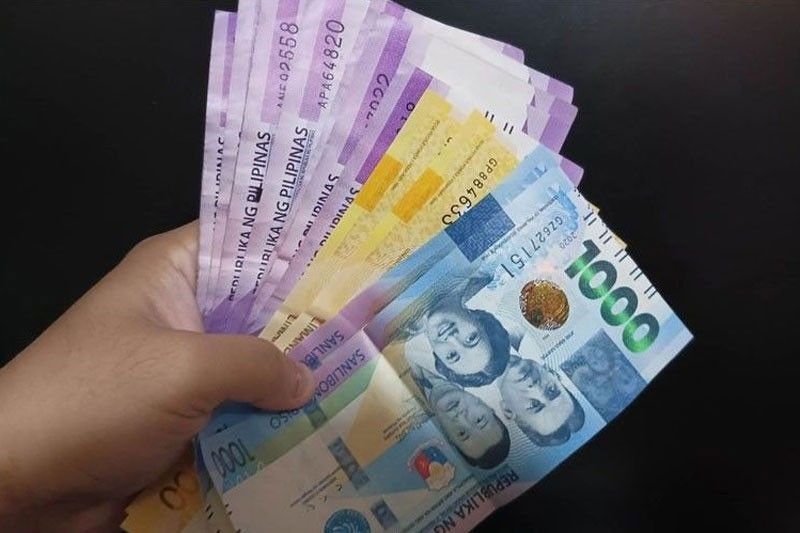Peso strengthens as Fed keeps cautious stance

THE PESO strengthened against the dollar on Thursday after the US Federal Reserve kept benchmark borrowing costs steady as expected and reiterated that they are in no rush to resume their rate-cut cycle.
The local unit closed at P57.222 per dollar on Thursday, rising by 7.8 centavos from its P57.30 finish on Wednesday, Bankers Association of the Philippines data showed.
The peso opened Thursday’s session stronger at P57.20 against the dollar. It traded higher than Wednesday’s close the entire day, posting an intraday low of just P57.255. while its best showing was at P57.11 versus the greenback.
Dollars exchanged went down to $1.296 billion from $1.72 billion on Wednesday.
“The dollar-peso closed higher after the Fed kept rates unchanged while Chairman Powell signaled a cautious approach amid uncertainties over inflation and the US economy,” a trader said in a phone interview.
The peso was also supported by lower global crude oil prices and US Treasury yields, Rizal Commercial Banking Corp. Chief Economist Michael L. Ricafort said in a Viber message.
For Friday, the trader expects the peso to move between P57 and P57.30 per dollar, while Mr. Ricafort sees it ranging from P57.10 to P57.30.
The Trump administration’s initial policies, including extensive import tariffs, appear to have tilted the US economy toward slower growth and at least temporarily higher inflation, Federal Reserve Chair Jerome H. Powell said on Wednesday, drawing the ire of President Donald J. Trump, Reuters reported.
Mr. Trump posted late on Wednesday on his Truth Social platform: “The Fed would be MUCH better off CUTTING RATES as US Tariffs start to transition (ease!) their way into the economy. Do the right thing.”
Earlier, in explaining why rates were being kept unchanged, Mr. Powell described the uncertainty faced by Fed policy makers as “unusually elevated.”
With overall sentiment sliding due to policy “turmoil,” prices are projected to rise faster than previously expected at least in part, and perhaps largely, because of Mr. Trump’s plans to impose duties on imports from US trading partners, Mr. Powell said after the Fed announced it had held its benchmark overnight rate steady in the 4.25%-4.5% range.
While Fed policy makers still expect the central bank to deliver two quarter-percentage-point rate cuts by the end of this year, matching their projection in December, that is largely due to weakened economic growth offsetting higher inflation, and what Mr. Powell called the “inertia” of not knowing what else to do given the muddled outlook.
There is “just really high uncertainty. What would you write down?” when making projections, Mr. Powell told a press conference after the Fed’s latest two-day policy meeting. “I mean it’s just… really hard to know how this is going to work out.”
“We understand that sentiment is quite negative at this time, and that probably has to do with turmoil at the beginning of an administration that’s making big changes,” Mr. Powell said.
Mr. Powell’s remarks and the Fed’s latest set of policy maker projections was heavily influenced by what has transpired since Mr. Trump took office on Jan. 20 with a vow to impose the import tariffs.
Data released along with the latest policy and economic projections showed Fed officials in near unanimity that the outlook was less certain than usual, and that risks considered balanced as of the Fed’s Jan. 28-29 meeting were now tilted towards slower growth, higher joblessness, and higher inflation.
“We now have inflation coming from an exogenous source,” said Mr. Powell, using a term economists employ to describe an outside shock, in this case tariffs that could, if Mr. Trump follows through with all his plans, lift the average tax rate on imports to levels not seen since the Great Depression.
The Fed cut its benchmark interest rate by a full percentage point last year, but has kept rates on hold this year as it waits for further evidence that inflation will continue to fall, and, more recently, for more clarity about the impact of Mr. Trump’s policies.
“We’re not going to be in any hurry to move,” Mr. Powell said. “Our current policy stance is well-positioned to deal with the risks and uncertainties we face… The right thing to do is to wait here for greater clarity about what the economy is doing.” — A.M.C. Sy with Reuters



